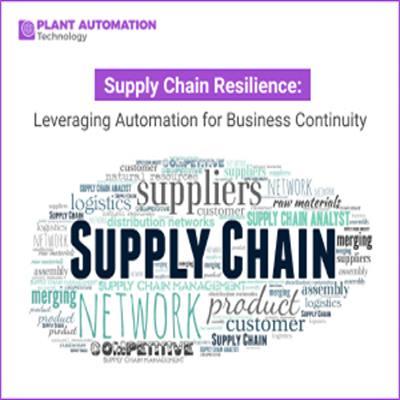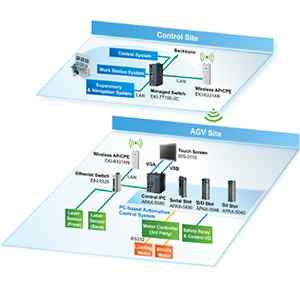Supply Chain Resilience: Leveraging Automation for Business Continuity

In the fast-paced global economy of today, supply chains serve as the cornerstone of various industries, enabling the smooth transportation of goods and services worldwide. Nonetheless, the COVID-19 pandemic brought to light the weaknesses in many supply chains, underscoring the urgent necessity for resilience. Businesses are progressively acknowledging the significance of establishing robust supply chain strategies to ensure uninterrupted operations, even in the face of unprecedented disruptions. Embracing automation has emerged as a crucial measure for strengthening supply chain resilience, fostering adaptability, and ensuring seamless functioning.
Understanding Supply Chain Resilience
Supply chain resilience pertains to the capacity of a supply chain to endure and rebound from unanticipated disruptions, guaranteeing the uninterrupted movement of products and services. These disturbances may originate from diverse origins, such as natural calamities, geopolitical tensions, economic fluctuations, or, as observed recently, global health emergencies. A resilient supply chain not only has the capability to confront these trials but also demonstrates the nimbleness to quickly adjust to evolving situations, thus reducing the repercussions on business activities and upholding customer contentment.
Challenges Faced by Traditional Supply Chains
Traditional supply chains have long relied on manual processes and human intervention, making them vulnerable to delays, errors, and inefficiencies. Such traditional models often lack the flexibility needed to quickly adapt to unforeseen disruptions. Consequently, when faced with unexpected events, supply chains can experience bottlenecks, delays in production, and increased costs, ultimately affecting overall productivity and customer satisfaction. Furthermore, the lack of real-time data visibility across the supply chain makes it challenging to identify potential issues proactively, exacerbating the impact of disruptions.
The Role of Automation in Enhancing Supply Chain Resilience
Automation, through the integration of digital technologies such as artificial intelligence (AI), the Internet of Things (IoT), and robotic process automation (RPA), plays a pivotal role in enhancing the resilience of modern supply chains. By automating various aspects of supply chain management, businesses can streamline operations, reduce human errors, and improve the overall efficiency of the supply chain. This, in turn, helps in mitigating the impact of disruptions and ensuring business continuity.
Benefits of Leveraging Automation in Supply Chain Management
1. Improved Operational Efficiency: Automation enables the streamlining of various supply chain processes, such as inventory management, order processing, and logistics, leading to increased operational efficiency and reduced costs.
2. Enhanced Data Visibility: Automated systems provide real-time data insights across the entire supply chain, enabling businesses to make informed decisions quickly and proactively identify potential disruptions before they escalate.
3. Greater Adaptability: Automation allows for the quick adjustment of production and distribution processes in response to changing market demands or unforeseen disruptions, ensuring that the supply chain remains flexible and adaptable.
4. Reduced Human Errors: By minimizing manual interventions, automation helps reduce the occurrence of human errors, leading to improved accuracy in inventory management and order fulfillment.
5. Optimized Inventory Management: Automated inventory tracking systems facilitate better inventory control, reducing the risk of overstocking or stockouts, thereby improving the overall supply chain performance.
Implementing Automation in Supply Chain Management
The successful implementation of automation in supply chain management requires a strategic approach that integrates technology seamlessly into existing processes. Here are some essential steps for leveraging automation effectively:
1. Assessment of Current Processes: Conduct a comprehensive assessment of existing supply chain processes to identify areas that can benefit from automation.
2. Investment in Suitable Technologies: Invest in technologies that align with the specific needs of the supply chain, such as AI-powered forecasting tools, IoT-enabled tracking systems, and automated warehouse management systems.
3. Integration and Collaboration: Ensure seamless integration of automated systems with existing software and foster collaboration between various stakeholders to facilitate a smooth transition to automated processes.
4. Training and Skill Development: Provide adequate training to employees to familiarize them with the new technologies and equip them with the necessary skills to operate and manage automated systems effectively.
5. Continuous Monitoring and Evaluation: Regularly monitor the performance of automated systems and make necessary adjustments to optimize their functionality and ensure continuous improvement.
Future Outlook
Looking ahead , in the face of the ever-changing and unpredictable global environment, it remains paramount for businesses to prioritize the establishment of robust supply chains through the incorporation of automation. The incorporation of automated technologies not only boosts operational effectiveness but also cultivates the flexibility and swiftness needed to endure disturbances and guarantee seamless business operations. Embracing automation enables businesses to position themselves favorably in an ever-evolving market, providing improved customer experiences and attaining sustainable expansion in the long term.
The Evolving Landscape of Supply Chain Automation
The landscape of supply chain automation is poised for significant advancements. With the rapid development of technologies such as machine learning, blockchain, and predictive analytics, the potential for further enhancing supply chain resilience is substantial. These technologies offer the capability to predict potential disruptions, optimize inventory levels, and enable end-to-end traceability, thereby fostering a more secure and transparent supply chain ecosystem.
Moreover, the integration of autonomous vehicles and drones in logistics and transportation is revolutionizing the delivery process, reducing lead times, and ensuring the timely delivery of goods. Robotics and automated warehouses are also becoming increasingly prevalent, enabling the efficient sorting and handling of goods, thus expediting the order fulfillment process and reducing operational costs.
Ensuring Ethical and Sustainable Automation Practices
While embracing automation, businesses must also prioritize ethical and sustainable practices. This entails ensuring the ethical sourcing of materials, promoting fair labor practices, and minimizing the environmental impact of automated operations. By incorporating sustainability into their automation strategies, businesses can contribute to the development of a responsible and environmentally conscious supply chain ecosystem, fostering long-term sustainability and resilience.
Collaboration and Adaptability as Key Pillars of Resilience
In the pursuit of a resilient and automated supply chain, collaboration and adaptability emerge as critical pillars. Collaboration among supply chain partners, including suppliers, manufacturers, distributors, and retailers, fosters a cohesive and interconnected supply chain network, enabling effective communication and coordination in times of disruption. Additionally, the ability to adapt swiftly to changing market dynamics and consumer preferences is essential for maintaining a competitive edge and ensuring customer satisfaction.
Empowering the Supply Chains of Tomorrow
In essence, the integration of automation in supply chain management is not merely a technological upgrade but a transformative shift toward creating agile, adaptable, and sustainable supply chains capable of withstanding the challenges of an increasingly complex global landscape. By leveraging automation, businesses can empower their supply chains to become more resilient, responsive, and customer-centric, laying the foundation for long-term success and growth in the dynamic marketplace of tomorrow.
Conclusion:
In conclusion, the integration of automation in supply chain management serves as a proactive strategy to fortify the resilience of modern supply chains, enabling businesses to mitigate risks, optimize operations, and ensure consistent performance even in the face of unforeseen disruptions.







